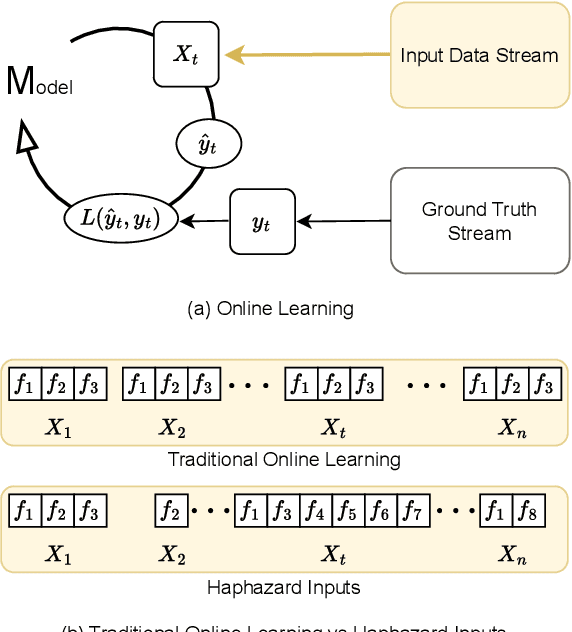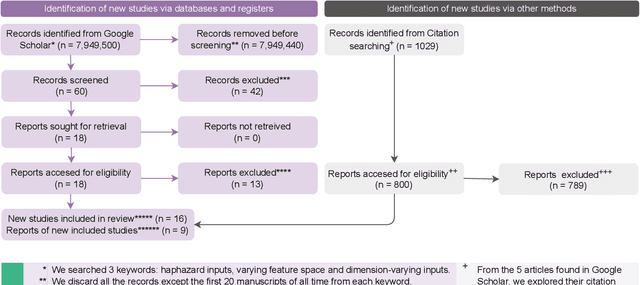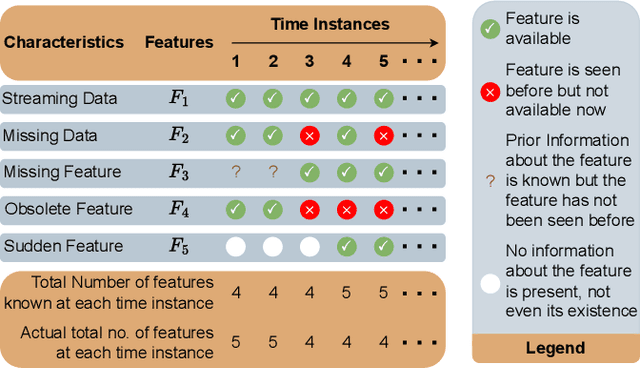Online Learning under Haphazard Input Conditions: A Comprehensive Review and Analysis
Paper and Code
Apr 07, 2024



The domain of online learning has experienced multifaceted expansion owing to its prevalence in real-life applications. Nonetheless, this progression operates under the assumption that the input feature space of the streaming data remains constant. In this survey paper, we address the topic of online learning in the context of haphazard inputs, explicitly foregoing such an assumption. We discuss, classify, evaluate, and compare the methodologies that are adept at modeling haphazard inputs, additionally providing the corresponding code implementations and their carbon footprint. Moreover, we classify the datasets related to the field of haphazard inputs and introduce evaluation metrics specifically designed for datasets exhibiting imbalance. The code of each methodology can be found at https://github.com/Rohit102497/HaphazardInputsReview
 Add to Chrome
Add to Chrome Add to Firefox
Add to Firefox Add to Edge
Add to Edge